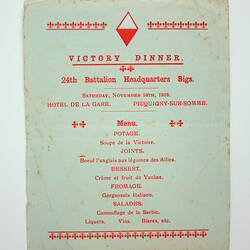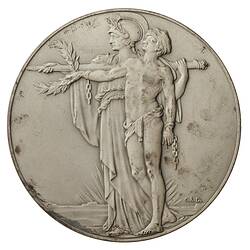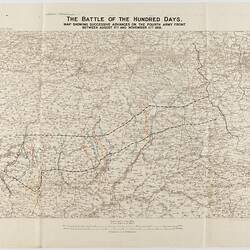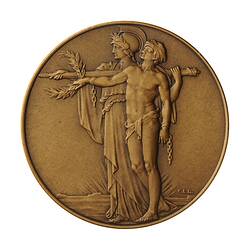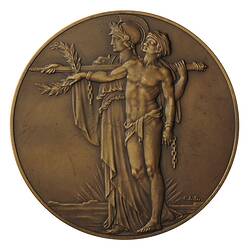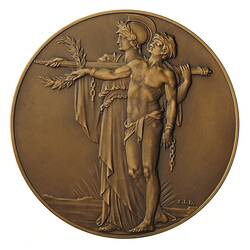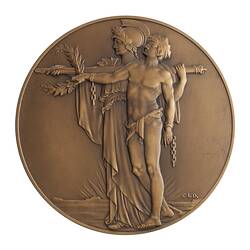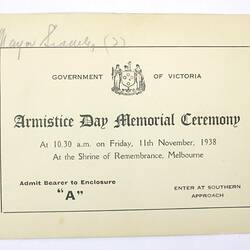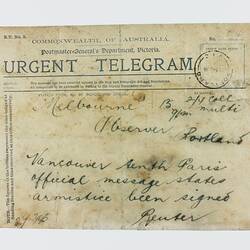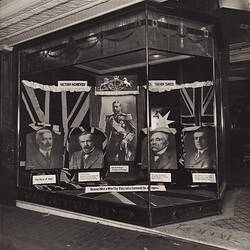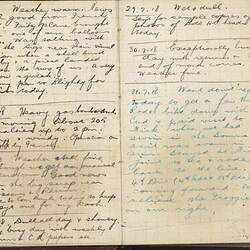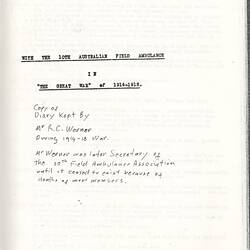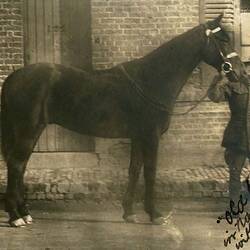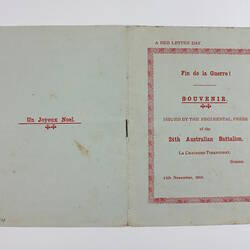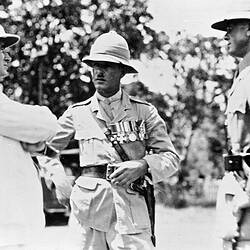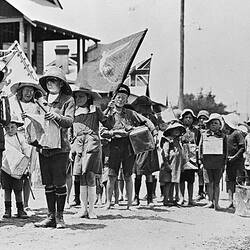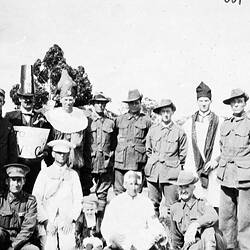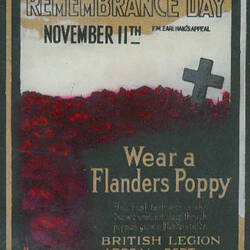Armistice was declared at 11am on 11 November, 1918, marking the end of hostilities in World War I. Over 60,000 Australians had been killed, 152,000 wounded and 4,000 taken prisoner. The Armistice was signed in a railway carriage in the forest of Compiegne, northern France. The carriage belonged to Ferdinand Foch, Commander-in-Chief of Allied Forces in France. The signing took place at exactly 5:12-5:20am Paris time (then just after 2pm Australian time on 11 November), to come into effect at 11am Paris time.
News of the Armistice was delayed in Australia by its distance from Europe, but telegrams communicated the news within hours. Museums Victoria holds a telegram sent on 11 November from Reuters and received by the Observer in Portland, Victoria. In Melbourne, crowds anticipating the announcement gathered at newspaper offices. When the notice was posted at the Age newspaper, 'Men and women looked up at the board as though they could scarcely believe what they read'; the news soon travelled 'like lightening'. The Age reported the next day: '"Armistice signed!" The magic words were flashed over the city. Cheer after cheer went up into the night. Thousands of voices rang out in song. Roll of drum and call of trumpet, bang of cracker and ring of bell, shriek of whistle and hoot of siren. Armistice signed! The pent-up feelings of the last momentous days were released, and from the hearts of the people came mighty shouts and cheers. The emotions could be expressed in no other way. Peace had come! The years of sorrow and agony were over. The moment for rejoicing was now. And Melbourne rejoiced. Flags and thousands surged into the streets to make wild and merry the night. The last hours of anxiety had slipped away. The women who had waited, waited, thinking of their men folk at the front, praying for the great reprieve that would bring solace to their hearts, watching the news boards and the papers day by day for the glorious tidings, at last found their peace of soul in the wonderful blessings of the world's peace. The night was for joy - for the joyous hailing of an event unparalleled. The greatest war was over. The last post would wail no more at the red burial of heroes. The engines of death would be put away. And over torn fields the ploughs would pass, and where the tide of battle had flowed and ebbed, there would the crops grow. Armistice signed, and round the world must now come ringing the 'grand phrases of the consoling hymn'."
The war did not officially end with the Armistice, however - that occurred with the signing of the Treaty of Versailles on 28 June 1919 and its enforcement on 20 January 1920.
Each year since 1918 the date and time of the Armistice has been commemorated throughout the world. Armistice Day - also known as Peace Day - became Remembrance Day after World War II, commemorating war dead from all conflicts. Remembrance Day remains a significant moment of reflection about war in Australia.
References
REJOICINGS IN AUSTRALIA (1918, November 12). The Age (Melbourne, Vic. : 1854 - 1954), p. 5. Retrieved October 17, 2018, from http://nla.gov.au/nla.news-article155241150
Aston, George, Major-General Sir, The Biography of the Late Marshal Foch, Macmillan, New York, 1929.
More Information
-
Keywords
-
Localities
-
Authors
-
Article types

